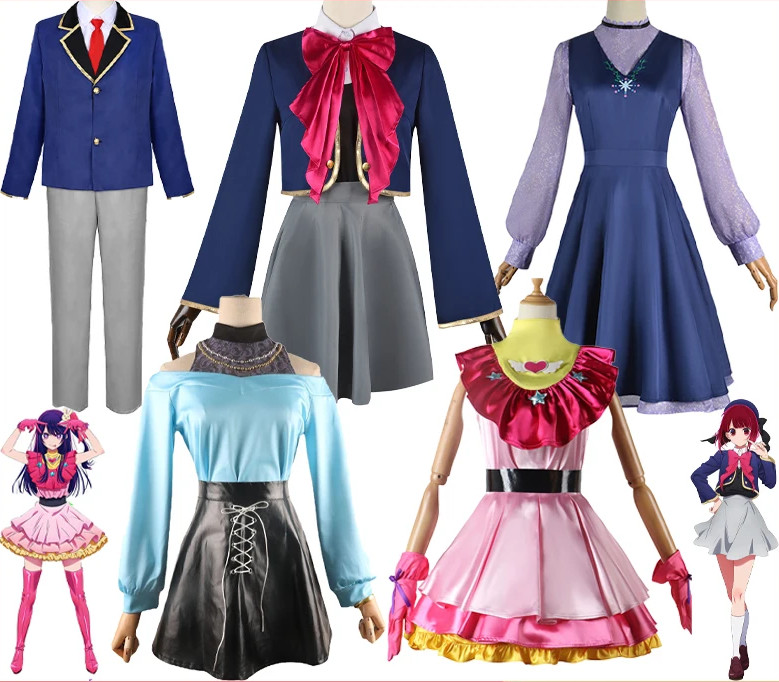
Newsletter Subscribe
Enter your email address below and subscribe to our newsletter

Enter your email address below and subscribe to our newsletter

Lolita fashion is a distinctive Japanese street style that emerged in the 1970s and gained popularity in the 1990s. Characterized by its emphasis on cuteness, modesty, and elegance, Lolita fashion draws inspiration from Victorian and Rococo-era clothing.

The style originated in Japan’s vibrant streetwear scene, with early influences coming from Japanese ateliers like Milk, Pink House, and Comme des Garçon in the 1970s and 1980s. It gained further momentum in the 1990s with the rise of Visual Kei, a Japanese music genre whose performers wore elaborate costumes that inspired fans to adopt similar ornate, gothic looks.
Key elements of Lolita fashion include:
Lolita fashion encompasses several substyles, including:
Despite its name, Lolita fashion is not associated with the controversial Vladimir Nabokov novel. Instead, it represents a celebration of youthful femininity and a form of self-expression that challenges societal norms. The style has gained a global following, with the United States boasting one of the largest Lolita communities outside of Japan.
Lolita fashion enthusiasts often gather for social events like tea parties, winery visits, and shopping excursions. While the style may have waned in Japan as it became more mainstream, it continues to thrive in international communities.
The popularity of Lolita fashion outside Japan has been fueled by the global interest in Japanese cultural exports, particularly anime and manga. However, it’s important to note that Lolita fashion is not considered a form of cosplay, as its followers view it as an authentic expression of their personal style and identity.
In recent years, the Lolita fashion scene has faced challenges, including the closure of influential magazines like FRUiTS and the hiatus of the Gothic & Lolita Bible. However, the style continues to evolve and adapt, with new substyles emerging and a dedicated global community keeping the fashion alive.
To start with Lolita fashion, follow these key steps:
Remember, Lolita fashion is about expressing yourself and having fun. Don’t be afraid to experiment and find what works best for you. As you become more comfortable with the style, you can expand your wardrobe and try more elaborate coordinates.
Lolita fashion, with its intricate designs and historical inspirations, has captivated fashion enthusiasts worldwide. Now, with advancements in artificial intelligence, creating and visualizing Lolita outfits has become even more accessible and exciting. AI clothes changers and outfit generators can help enthusiasts experiment with different styles and combinations effortlessly.
An AI clothes changer is a tool that allows users to modify the clothing in an image quickly and accurately. By using AI technology, these tools can change outfits according to user descriptions, making it possible to visualize different clothing styles on a model or even oneself in seconds.
Step 1. Upload Image
You can start by uploading any image to generate lolita outfit.

Step 2. Brush Strokes
iFoto AI outfit generator will mark the areas of the clothing they want to change.
Step 3. Description Prompt
You can then describe the desired outfit, such as “red summer maxi dress” or “Gothic Lolita dress with lace and bows.”
Step 4. Generation
The AI processes the input and generates the new outfit on the model, maintaining the original pose and background.

While the lolita outfit generator is not meant to replace genuine creativity or personal style in Lolita fashion, they serve as a playful tool for enthusiasts to explore different combinations and potentially discover new ideas for their outfits.
Can anyone wear Lolita fashion?
Yes, Lolita fashion is inclusive and can be worn by anyone who appreciates the style, regardless of age, body type, or gender.
Is Lolita fashion the same as cosplay?
No, Lolita is a fashion style, while cosplay is role-playing as a specific character. While there may be some overlap in communities, they are distinct.